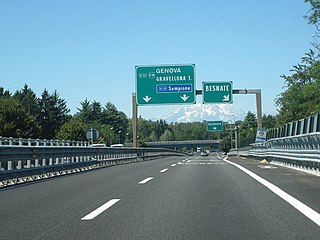
Italy has a well developed transport infrastructure. The Italian rail network is extensive, especially in the north, and it includes a high-speed rail network that joins the major cities of Italy from Naples through northern cities such as Milan and Turin. The Florence–Rome high-speed railway was the first high-speed line opened in Europe when more than half of it opened in 1977. Italy has 2,507 people and 12.46 km2 per kilometer of rail track, giving Italy the world's 13th largest rail network. The Italian rail network is operated by state-owned Ferrovie dello Stato, while the rail tracks and infrastructure are managed by Rete Ferroviaria Italiana.

Inter-city rail services are express trains that run services that connect cities over longer distances than commuter or regional trains. They include rail services that are neither short-distance commuter rail trains within one city area nor slow regional rail trains stopping at all stations and covering local journeys only. An inter-city train is typically an express train with limited stops and comfortable carriages to serve long-distance travel.
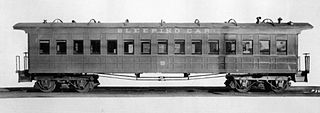
The sleeping car or sleeper is a railway passenger car that can accommodate all passengers in beds of one kind or another, for the purpose of sleeping. George Pullman was the American innovator of the sleeper car.

The London and North Western Railway was a British railway company between 1846 and 1922. In the late 19th century, the LNWR was the largest joint stock company in the world.
A train operating company (TOC) is the term used on the railway system of Great Britain for a railway undertaking operating passenger trains under the collective National Rail brand. TOCs have existed since the privatisation of the network under the Railways Act 1993.
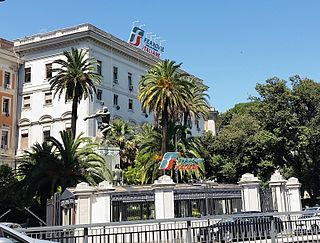
Trenitalia is the primary train operator in Italy. A subsidiary of Ferrovie dello Stato Italiane, itself partly owned by the Italian government, the company and partly from a private investors group. It was established in 2000 following a European Union directive on the deregulation of rail transport.

York railway station is on the East Coast Main Line serving the cathedral city of York, North Yorkshire, England. It is 188 miles 40 chains (303.4 km) north of London King's Cross and on the main line it is situated between Doncaster to the south and Thirsk to the north. As of June 2018, the station is operated by London North Eastern Railway. It is the busiest station in North Yorkshire, the second busiest in Yorkshire & the Humber, and the fifth busiest in Northern England.
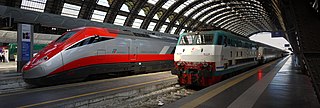
The Italian railway system is one of the most important parts of the infrastructure of Italy, with a total length of 24,227 km (15,054 mi) of which active lines are 16,723 km (10,391 mi). The network has recently grown with the construction of the new high-speed rail network. Italy is a member of the International Union of Railways (UIC). The UIC Country Code for Italy is 83.

Compagnie Internationale des Wagons-Lits is a Belgian-founded French company known for providing and operating luxury trains with sleepers and dining cars during the late 19th and the 20th centuries, most notably the Orient Express. Founded by Georges Nagelmackers in 1872, CIWL developed an international network of trains beginning in Europe, and later expanding to Asia and Africa. The trains provided luxury and comfort at a time when travelling was still rough and dangerous. The Armistice with Germany was signed in a CIWL train carriage, the Compiègne Wagon, on November 11, 1918.
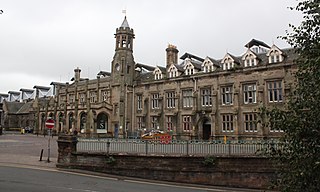
Carlisle railway station, or Carlisle Citadel, is a Grade II* listed railway station serving the cathedral city of Carlisle, Cumbria, England. It is on the West Coast Main Line, 102 miles (164 km) south-east of Glasgow Central and 299 miles (481 km) north north-west of London Euston. It is the northern terminus of the Settle and Carlisle Line, a continuation of the Midland Main Line from Leeds, Sheffield and London St Pancras. It was formerly the southern terminus of the partially-closed Waverley Route from Edinburgh. It is so named because it is adjacent to Carlisle Citadel, a former medieval fortress. The station is owned by Network Rail.

Caledonian Sleeper is the collective name for overnight sleeper train services between London and Scotland, in the United Kingdom. It is one of only two currently operating sleeper services on the railway in the United Kingdom, the other being the Night Riviera which runs between London and Penzance.

The Venice Simplon-Orient-Express (VSOE) is a private luxury train service from London to Venice and other European cities. It is currently owned by Belmond.

Carstairs railway station serves the village of Carstairs in South Lanarkshire, Scotland and is a major junction station on the West Coast Main Line (WCML), situated close to the point at which the lines from London Euston and Edinburgh to Glasgow Central merge. Constructed originally by the Caledonian Railway, the station is managed today by ScotRail who also operate most services which serve the station; it is also served by one TransPennine Express service per day between Manchester Airport and Glasgow Central and one Caledonian Sleeper service each way per day between Glasgow Central and London Euston. All other services by TransPennine Express and services operated by Avanti West Coast, CrossCountry and London North Eastern Railway pass the station, but do not stop.
The Nightstar was a proposed overnight sleeper train service from various parts of the United Kingdom to destinations in mainland Europe, via the Channel Tunnel, in the mid 1990s. To run alongside the Eurostar, and north of London day-time Regional Eurostar services which were never operational, the Nightstar was the last part in a proposed round-the-clock passenger train utilisation of the Channel Tunnel.

TGV Artesia was a service branding and joint venture between France and Italy from 1995 to 2011.
The Calais-Mediterranée Express was a French luxury night express train which operated from 1886 to 2003. It gained international fame as the preferred train of wealthy and famous passengers between Calais and the French Riviera during the interwar period. It was colloquially referred to as Le Train Bleu in French and the Blue Train in English because of its dark-blue sleeping cars.
Railway companies in Europe assign their trains to different categories or train types depending on their role. Passenger trains may be broadly split into long-distance and local trains; the latter having average journey times of under an hour and a range of less than 50 kilometres. Goods trains have their own train types. The names of these train types have changed continually over the course of time.

Frecciarossa is a high-speed train of the Italian national train operator, Trenitalia, as well as a member of the train category Le Frecce. The name, which, if spelt "Freccia rossa" means "Red arrow" in English, was introduced in 2008 after it had previously been known as Eurostar Italia. Frecciarossa trains operate at speeds of up to 300 km/h (190 mph). Frecciarossa is the premier service of Trenitalia and competes with italo, operated by Nuovo Trasporto Viaggiatori.

Padova railway station, or Padua railway station, sometimes referred to as Padova Centrale, is the main station serving the city and comune of Padua, in the Veneto region, northeastern Italy.
Trenitalia France is an open-access train operator running international services between France and Italy. It was originally established under the Thello brand in October 2011.
















